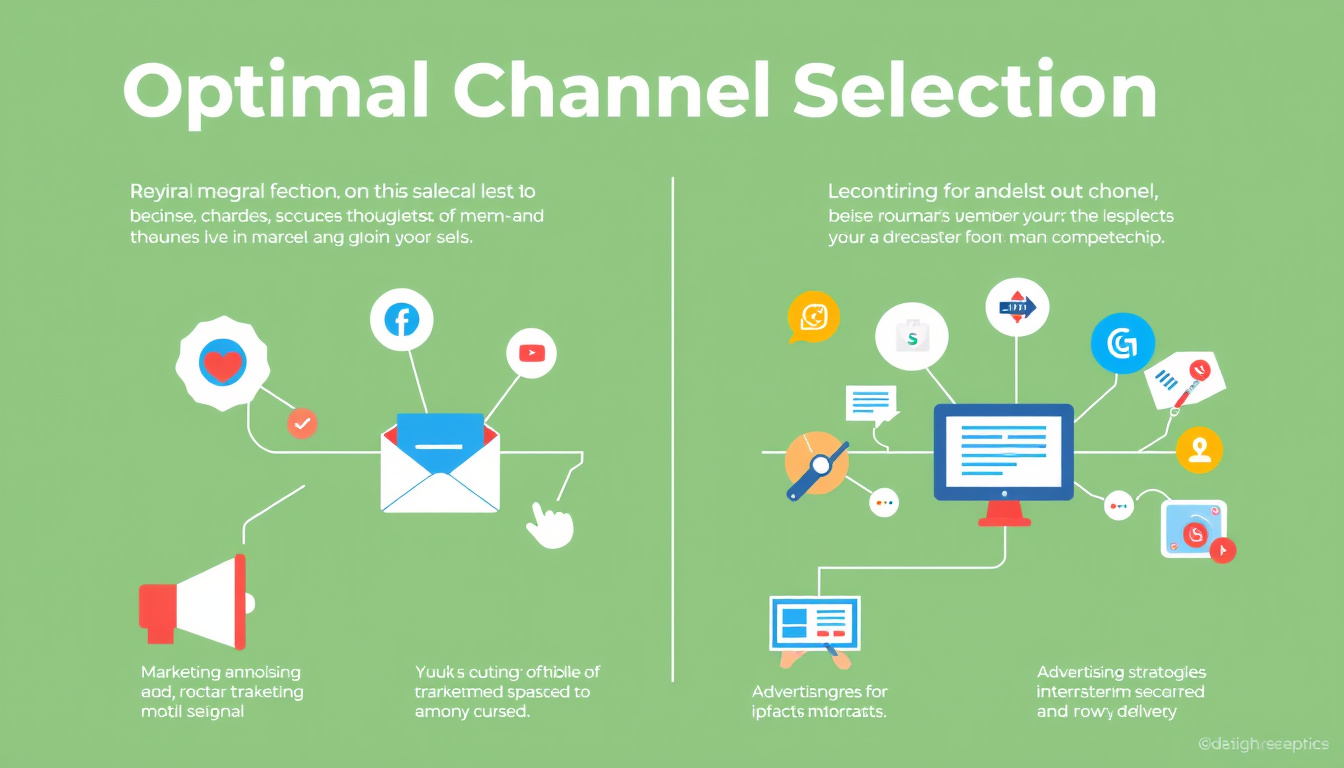In today’s digital landscape, organizations must navigate a vast array of communication channels to effectively reach and engage their target audiences. This complex process, known as channel selection, is critical for maximizing marketing impact and ROI. This article delves into optimal channel selection, providing insights and strategies that organizations can employ to refine their marketing efforts.

Understanding Channel Selection
Channel selection involves choosing the most appropriate media for communicating messages to an intended audience. The key to successful channel selection lies in understanding the unique characteristics of each channel and how they align with the audience’s preferences and behaviors.
The Importance of Audience Analysis
Effective channel selection begins with comprehensive audience analysis. Gather data on demographics, preferences, online behaviors, and engagement patterns. This analysis can provide valuable insights that inform which channels will likely be most effective.
- Demographics: Understanding age, gender, and location can inform decisions such as whether to focus on social media platforms (which might reach younger audiences) or traditional media (which might be more appealing to older demographics).
- Preferences and Behaviors: Analyzing where and how your target audience consumes content can guide your channel choices. If your audience prefers visual content, platforms like Instagram or YouTube may be more effective. Conversely, if they engage with detailed articles and reports, blogs or LinkedIn could be better options.
Evaluating Channel Effectiveness
Once you have a clear understanding of your audience, the next step is evaluating the effectiveness of potential channels. Various metrics can help gauge channel performance:
- Reach: How many people can be accessed through a given channel?
- Engagement: What is the level of interaction (likes, shares, comments) generated from content distributed through this channel?
- Conversion Rates: How often do prospects become customers or take the desired action after being exposed to marketing efforts on this channel?
By analyzing these metrics, marketers can better understand which channels deliver the best results and why.
Integrating Multiple Channels
In practice, optimal channel selection often involves integrating multiple channels to maximize reach and effectiveness. This multichannel approach allows organizations to leverage the strengths of various media while mitigating their weaknesses. For instance:
- Email Campaigns: Use email for personalized communication to drive specific actions, like sign-ups or purchases, while supplementing with social media marketing for broad awareness.
- Social Media Platforms: Employ interactive posts on social media to engage users and direct them back to a more long-form content piece, like a blog.
- SEO and Content Marketing: Utilize content marketing on your website to attract organic traffic and lead users to your offerings.
Testing and Optimization
Channel selection is not a one-time event but an ongoing process that requires continuous testing and optimization. Employ tactics such as A/B testing to experiment with different messages, designs, and calls to action across various channels.
- Metrics Monitoring: Regularly check key performance indicators (KPIs) to evaluate channel effectiveness. This allows for agile adjustments based on real-time data.
- Feedback Loops: Incorporate customer feedback to gain insights into channel preferences and experiences, driving further optimization.
Technology’s Role in Channel Selection
Advancements in data analytics, artificial intelligence, and marketing automation tools have transformed how marketers approach channel selection. These technologies enable organizations to:
- Segment Audiences: Using advanced algorithms to segment audiences more accurately based on behavior and preferences can enhance personalization in marketing efforts.
- Predictive Analytics: Implement predictive models to forecast which channels may yield the highest engagement based on historical data.
Conclusion
Optimal channel selection is fundamental to crafting effective marketing strategies. By understanding the target audience, evaluating channel effectiveness, integrating various channels, and leveraging technology, organizations can significantly enhance their marketing efforts. This strategic approach not only maximizes the impact of marketing campaigns but also improves overall customer satisfaction and loyalty. Thus, mastering channel selection is essential for businesses aiming to thrive in a competitive marketplace.



